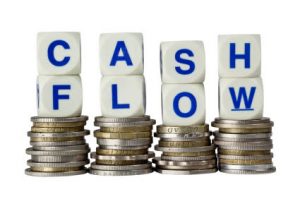Dividend Value Builder Newsletter
What is Owner Earnings and Owners’ Cash Profits?
Owner Earnings and Owners’ Cash Profits are similar types of cash flow for analysis of businesses and stocks. These metrics provide important insight into the cash flow of the entity, particularly the cash flow available for the owners.
Owner Earnings
The value analyst must view a company differently than the accountant whose task is to document. GAAP (Generally Accepted Accounting Principles) may not provide a true picture for equity valuation due to accounting entries that distort profitability.
Owner Earnings is a cash flow concept popularized by Warren Buffett in his 1986 Berkshire Hathaway company letter to shareholders. Consider at this time that companies were not required to produce a cash flow statement.
Buffet described how he and Charlie Munger analyzed cash flow:
Owner Earnings Calculation
Owner Earnings = (a) Net Income plus (b) depreciation, depletion, amortization, and other non-cash charges minus (c) average annual maintenance capital expenditures
(a) Found in the Income Statement
(b) Found in the Cash Flow Statement (now – not in 1986)
(c) is harder to calculate. Buffet had to calculate this metric without the benefit of a cash flow statement. This is his description:
“( c) the average annual amount of capitalized expenditures for plant and equipment, etc. that the business requires to fully maintain its long-term competitive position and its unit volume. (If the business requires additional working capital to maintain its competitive position and unit volume, the increment also should be included in ( c) . However, businesses following the LIFO inventory method usually do not require additional working capital if unit volume does not change.)”
The challenge of owner earnings is that companies generally do not report a separate number for maintenance capex. Using estimates and averages can mean that an analysts best “guesstimate” will not be as accurate as it could be.
Since there is no easy means to determine what part of capital expenditures (CAPEX) is maintenance and what is for “growth”; it makes sense for many investors to just use the total CAPEX (available in the cash flow statement). This is a more conservative figure, and sufficient for most investors:
Owner Earnings = Net Income + Non-Cash Expenses [depreciation & amortization +/- one-time items] – Capital Expenditures
Note: This is basically Free Cash Flow except the equation starts with Net Income instead of Operating Cash Flow. The result is that working capital is not included in the calculation, which is not necessarily good or bad. Its just one more metric to consider.
Owners’ Cash Profits
Owners’ Cash Profits is a minor alteration of Owner Earnings. I always look at this metric for the simple reason that I use Y-Charts. This is their approach to owners cash profits:
Owners’ Cash Profits Calculation
Owners’ Cash Profits (OCP) = Cash Flow from Operations – [Estimate of Maintenance Capital Expenditures]
or the long version:
Owners’ Cash Profits (OCP) = [Net Income + depreciation & amortization +/- one-time adjustments +/- working capital] – [Estimate of Maintenance Capital Expenditures]
Which is Best: Owner Earnings or Owners’ Cash Profits?
Owners’ Cash Profits (OCP) uses an estimate of maintenance capex while Owner Earnings uses average annual maintenance capex. Since most of the time the analyst has to make guesstimates anyway, it’s probably splitting hairs to worry about the difference for most investors.
The other difference between the two is Owners’ Cash Profits would include changes in working capital. This is because OCP uses Cash Flow From Operations instead of Net Income. I’ve seen debates pro & con for each method. In my estimation, it probably doesn’t matter much for most investors.
Ideally you want to look at both methods. If the numbers are close you probably have a solid number. If the Owner Earnings are significantly higher than Owners’ Cash Profits you may have a company that is requiring an increasing amount of working capital to run the day to day operations of the business.
There is never one perfect number in investment analysis. Owner earnings and Owners’ Cash Profits are both helpful tools to use in your value analysis.
Additional Reading:
Intrinsic Value Stock Analysis – My Formula
Minimize Large Portfolio Drawdowns
Invest With Confidence in Less Time - Manage Your Portfolio Without Behavioral Errors

